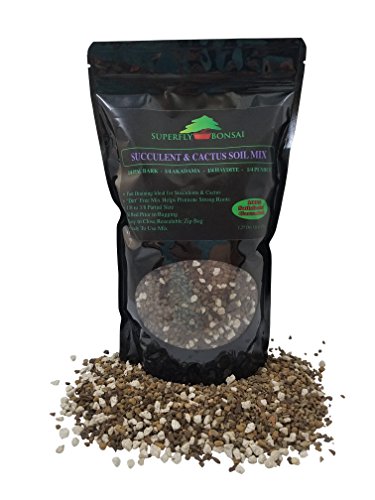Snake plants are relatively easy plants to care for, but what if yours has gotten brown tips on its leaves --what should you do? We've gathered our research to come up with a handy guide to help you and your plant.
If your plant has brown tips, here are the things you should do:
- Check to see if it has enough water
- Make sure the soil is not too loosely or tightly packed
- Feel for drafts
- Observe the plant's leaves for signs of illness
- Prune away any dead areas
We'll take a look at these strategies in-detail and then answer a few other commonly asked questions about your snake plant, like how often they should be watered and how to trim dead leaves. So please, keep reading as we share what you need to know to keep your snake plant looking great.
What To Do To Make Sure Your Snake Plant Is Healthy
Snake plants (also known as Mother In Law's Tongue) are hardy succulents that are super popular as houseplants. But that doesn't mean they can't occasionally have health issues that you will need to address. If your snake plant is getting brown leaf tips, it's a good sign that it might be time to give it some tender loving care. Let's look at each area that may need addressing to improve your plant's health.
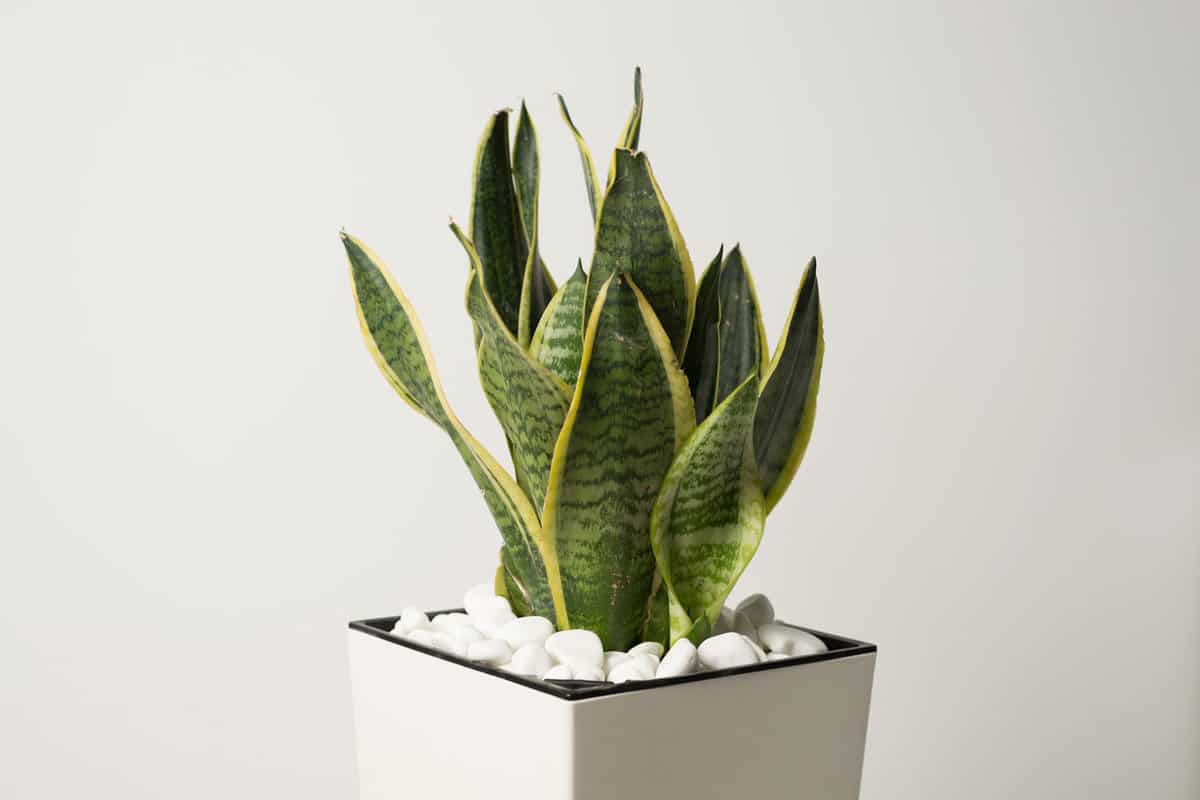
Check To See If It Has Enough Water
Because it's a succulent, the snake plant doesn't need as much water as other plants; but, it can still get too dry. Browning leaves are a sure sign that your plant is thirsty. You can either use a moisture meter or use a finger check to see how dry your soil has gotten. If it's dry, then water your snake plant. However, be sure to let it dry out in between waterings.
Make Sure The Soil Is Not Too Loosely or Tightly Packed
Snake plants don't like too much water, so you want to make sure the soil isn't too densely packed. But if your plant shows the signs of dryness and brown tips, your soil might be too loose. You can always re-pot your snake plant to make sure it has the right mixture for its roots and needs.
Using a succulent and cactus soil mix when repotting ensures that you'll have just the right amount of airiness without too loose soil. Click here for this on Amazon.
Feel For Drafts
Another factor that may affect your plant's dryness is a draft. If your snake plant is near a heating duct or warm window, the breeze and heat may dry the soil out prematurely. This is an easy fix; simply move the plant to another location with less of a draft, and this problem will be solved. If you can't find another spot you like as much, consider getting a small humidifier to keep in the plant's location. This will add moisture into the air.
Click here for this small humidifier on Amazon.
Observe The Plant's Leaves For Signs Of Illness
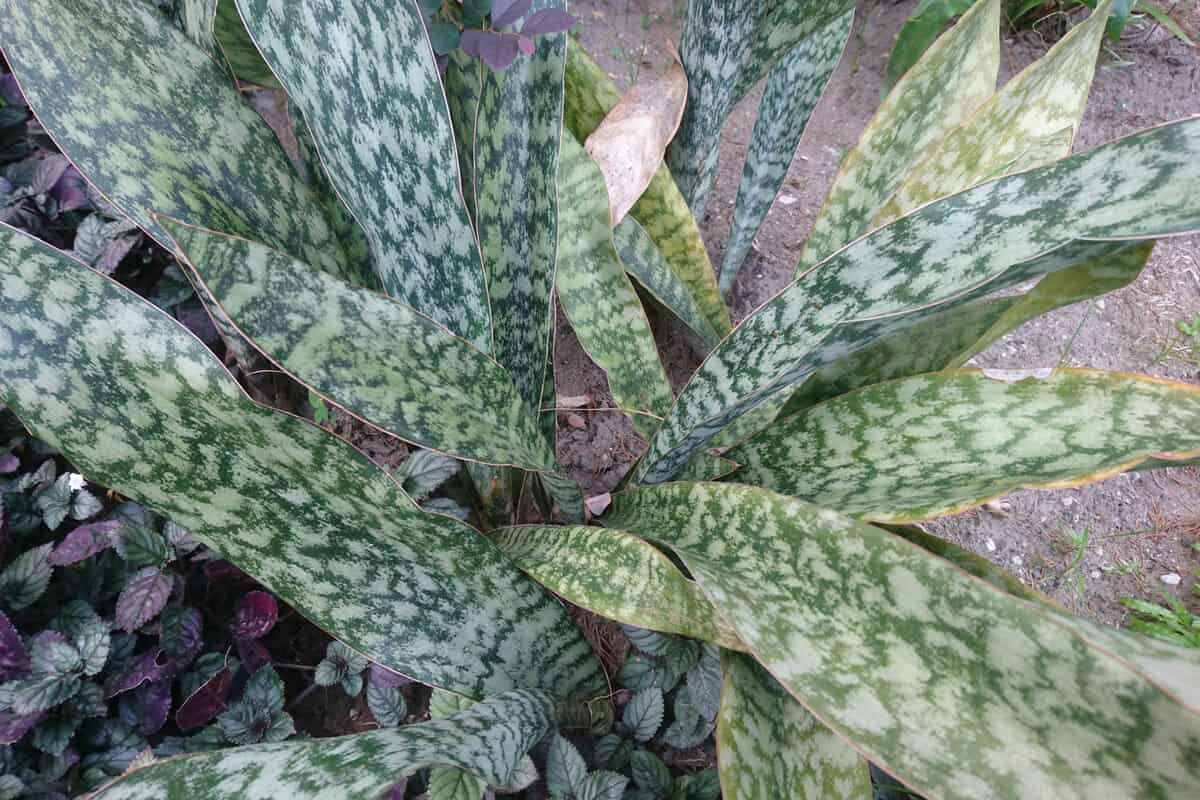
If you've noticed brown tips on your snake plant, then look for other indicators it may need help. If it has curling or falling leaves, you may have an insect problem. Little tiny black bugs called thrips are the most common pest to infiltrate a snake plant. To get rid of them, shake the plant off, clean the leaves with a mixture of water and mild dish soap. You can also use a commercial product.
This insecticide soap will help guard your snake plant from thrips. Click here to see it on Amazon.
Prune Away Any Dead Areas
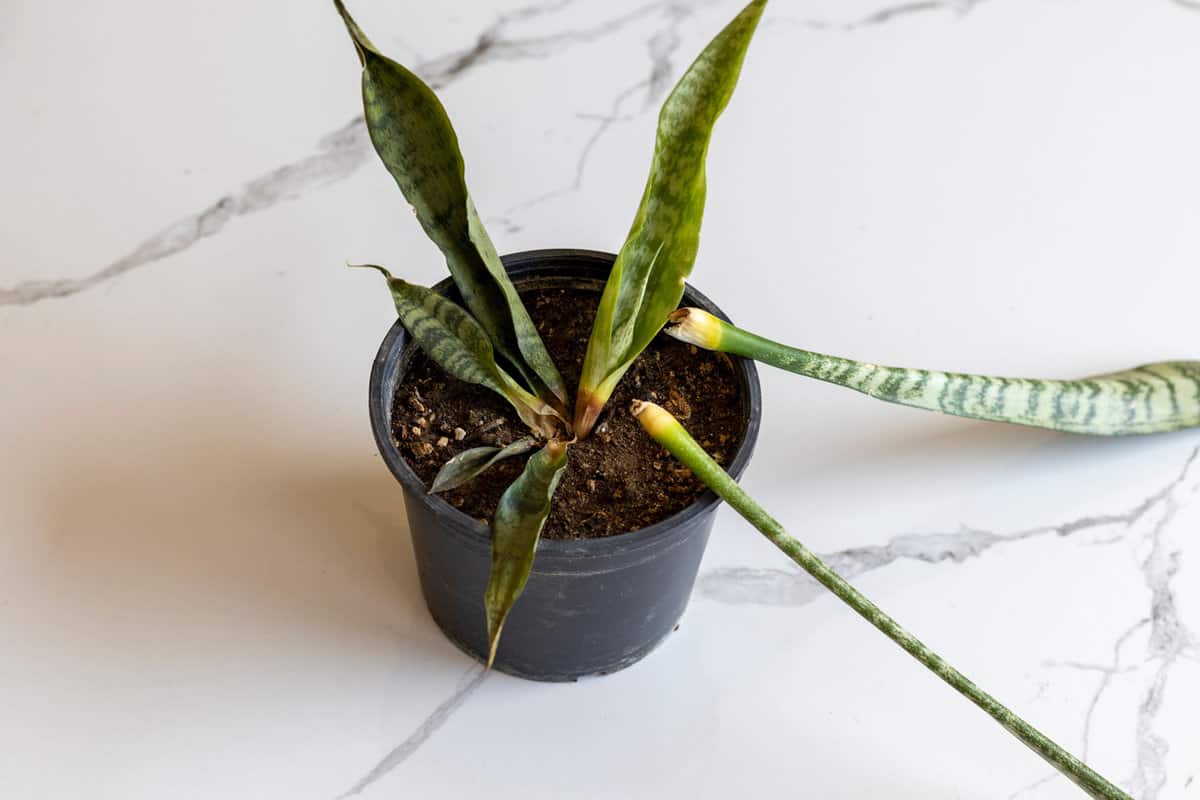
Now that you've identified what might be the problem with your snake plant, it's time to make it look pretty again. Using some sharp pruning snips, clip away any dead or dying spots. This will allow your plant to focus all its energy on its healthy leaves and grow like crazy.
This two-foot-tall snake plant is available online to be delivered straight to your door. It comes in a simple grower's pot but can be slipped inside of a decorative basket or pot without even repotting it. It's a super-easy way to add a new house plant to your collection without leaving your home. Click here for this plant on Amazon.
Can You Cut The Brown Tips Off Your Snake Plant?
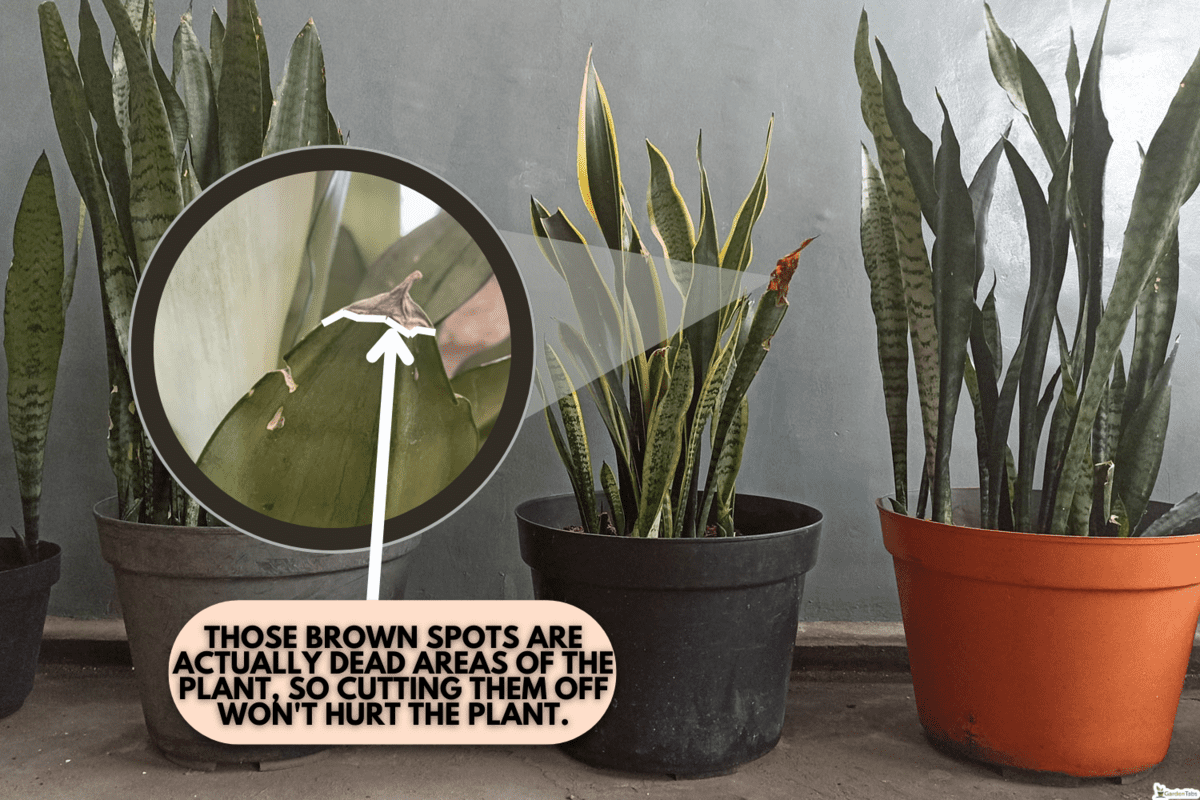
Brown tips on your snake plant indicate that your plant has been stressed at some point. Those brown spots are actually dead areas of the plant, so cutting them off won't hurt the plant. Just keep in mind how you want the plant to look overall and cut carefully. If you have a bit on the side of the leaf or at the tip, you may want to cut just to the edge of the brown. This way, you won't be cutting into healthy plant tissue.
How Do You Fix An Under-Watered Snake Plant?

With snake plants being a member of the succulent family, it's often easier to overwater them than underwater them. However, it can be done. This happens when the soil gets too dry before you water the plant again. Because we often worry about overwatering succulents, it can sometimes lead us to wait too long between waterings. You'll notice the lack of water when the plant's leaves start to turn brown at the tips.
So how to fix this? First, think about your watering schedule. During the growing season, you want to water succulents about every one to two weeks. If it's drying out really quickly, check the plant's location to ensure it's not near a vent or other drying element. Another thing to check is soil. Though snake plants do best with a fairly loose loamy soil, the water may run right through it without reaching the roots if it's too loose. Make sure your soil is more vermiculite and coir than gravel.
Then, when you've got it fixed up, you can prune back any brown areas to make your plant look as healthy as it feels.
How Often Should Snake Plants Be Watered?
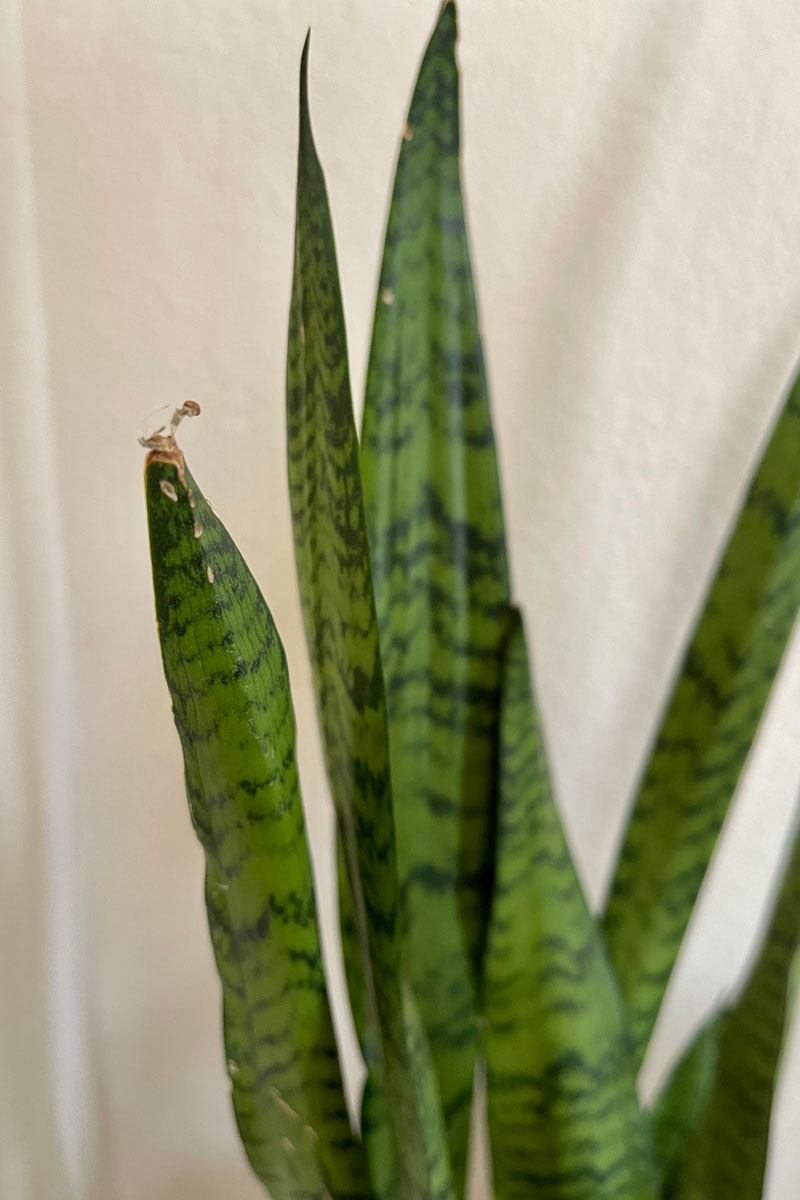
Snake plants are succulent, which means they can tolerate a bit of dryness between waterings and prefer it. So what does this mean exactly? Well, it means that you can get away with watering a snake plant every week or two in the growing season. The best way to check is to do the two-inch finger test. Poke your index finger into the soil a couple of inches, and if it's dry all the way down, then it's time to give your plant a thorough watering. Be sure to let it dry out between soakings, but not for too long.
In the dormant season, your snake plant may tolerate watering as infrequently as every couple of months. But it's important to check because if you have it too near a heating duct, it may dry out more quickly than you'd think. If you see your leaf tips starting to brown, then you know your snake plant is thirsty.
A soil moisture meter like this one is a good way to check your soil if you don't feel like getting dirty. Just stick the probe into the soil, and the simple dial tells you if it's too dry or too wet. Ideally, you keep it in the green central zone. Click here for this meter on Amazon.
How Do You Trim Dead Leaves On A Snake Plant?
There are two things to think about, trimming dead leaves and pruning your snake plant. If your snake plant has some leaves that are not looking right, or you feel as if it's gotten too asymmetrical, you may want to prune it. Determine which of the leaves you want to take off, and using clean, sharp pruning shears, snip them off at the base of the plant. If the leaves are curled and weak looking, you can try simply giving them a gentle tug. If they're done, they'll pull up at the roots.
It's always handy to have a sharp pair of pruning shears. Click here for this pair on Amazon.
If your leaves are browned at the tips or along the leaves' edges, check to make sure your plant's environment is good. Once you've established all of its needs are being met, then simply tip the brown and dead spots away from the plant. Leave a tiny edge of brown, so you're not cutting into the live part of the plant.
A Healthy Plant Is A Happy Plant
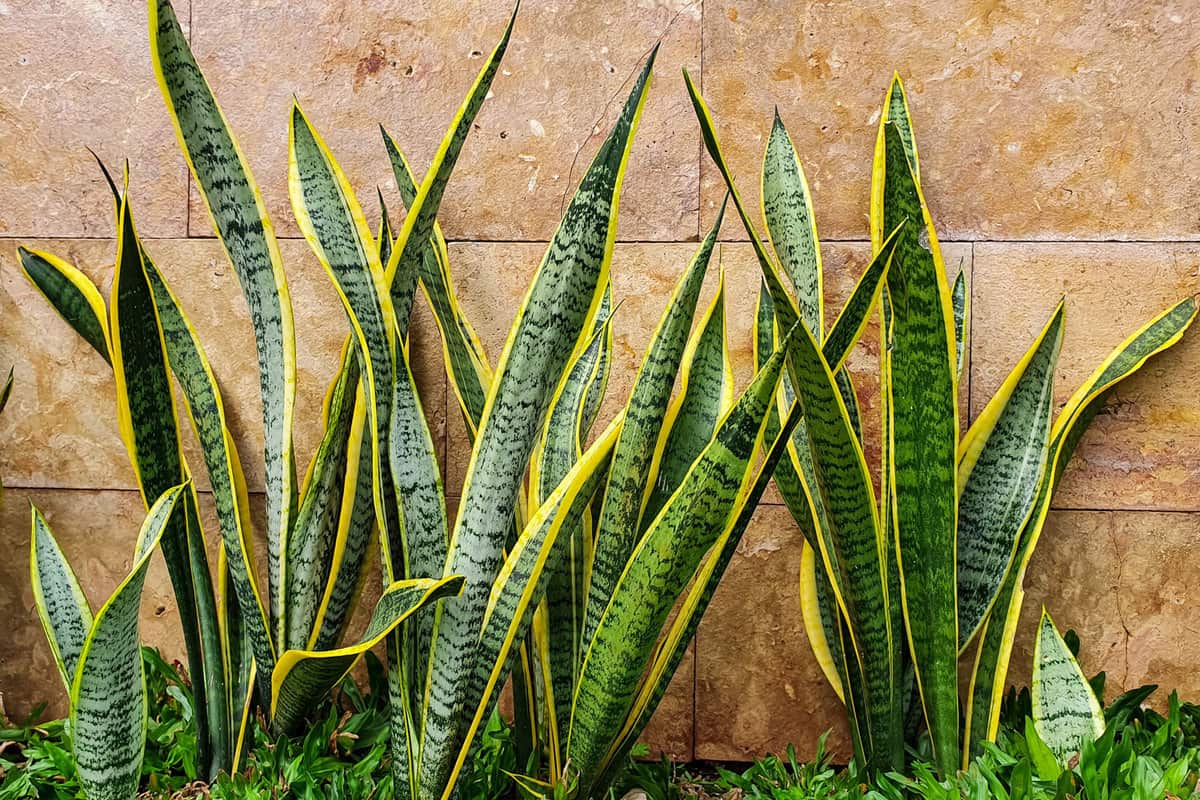
House plants make a home feel warm and comforting. This is why we do our best to keep those plants thriving. Snake plants are a very easy plant to grow, but they still need care. This post should help you when problems arise.
If you enjoyed this post here at GardenTabs.com, please check out a few of our others below:
Where To Place A Snake Plant In Feng Shui
9 Snake Plant Arrangement Ideas


